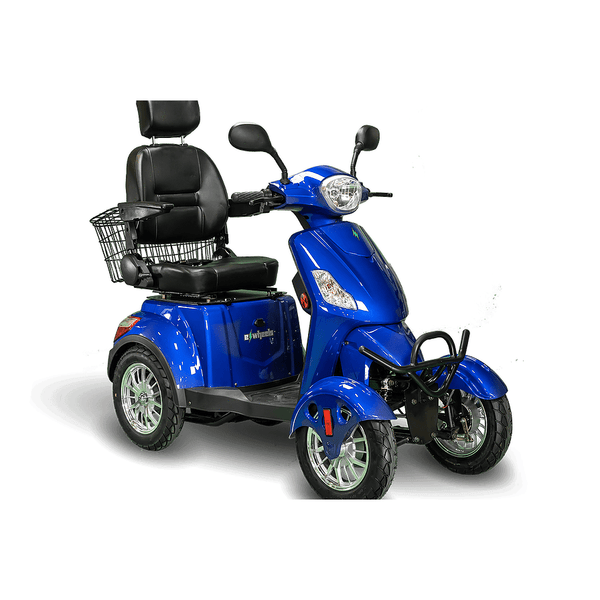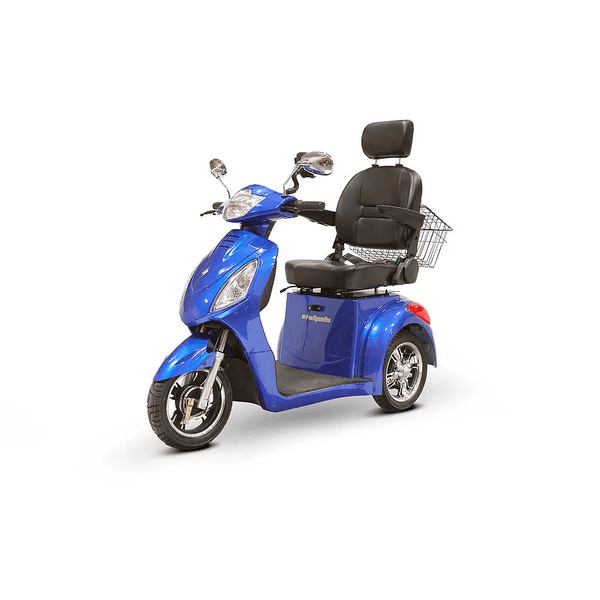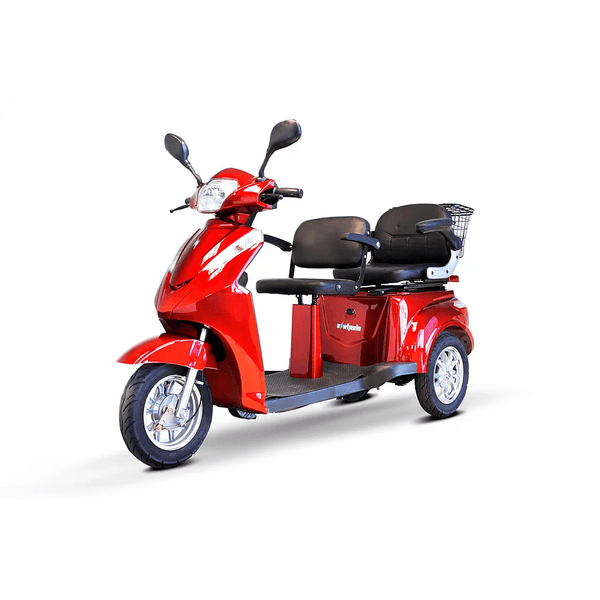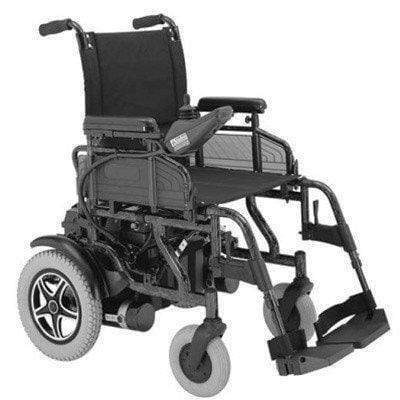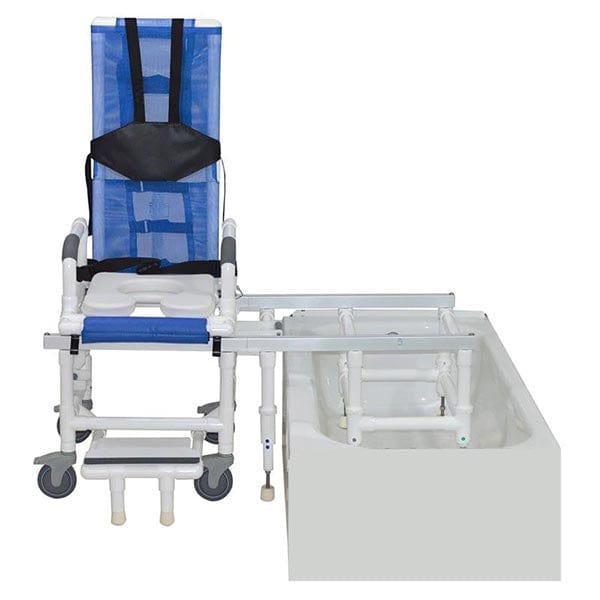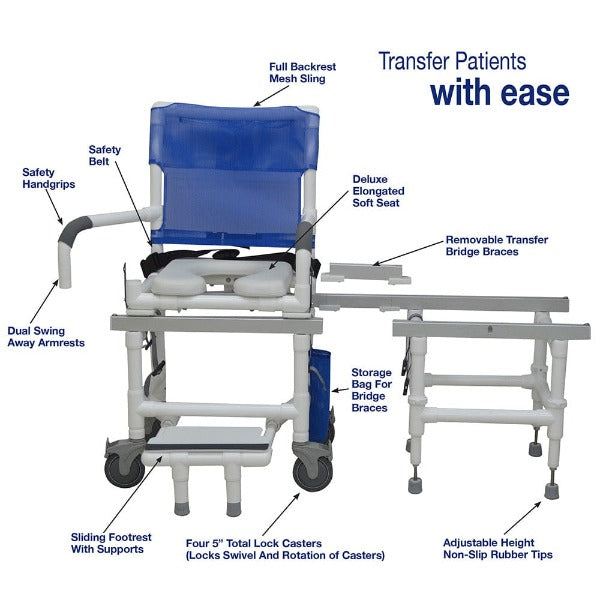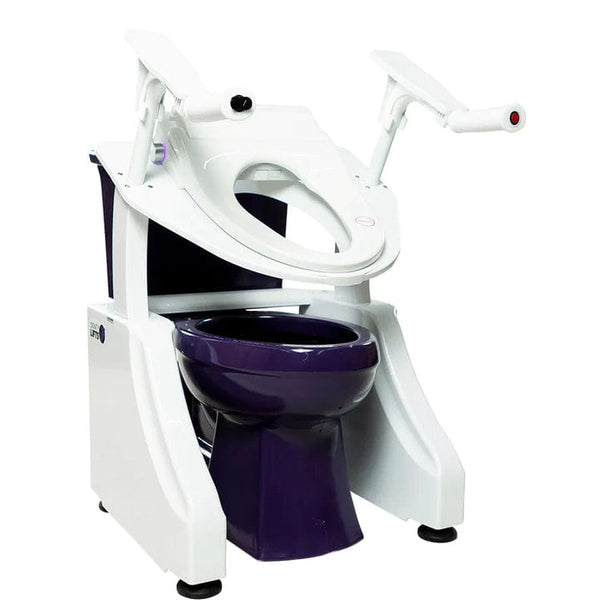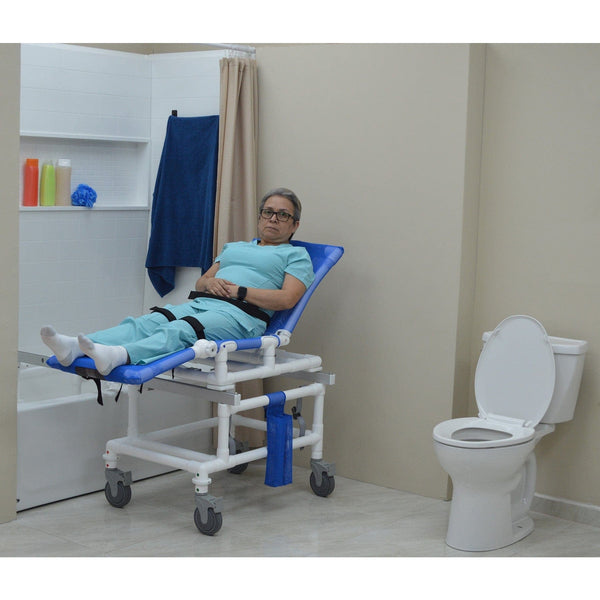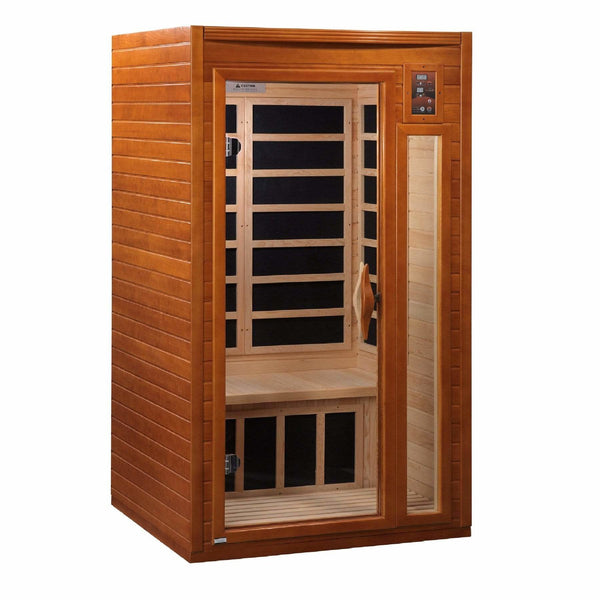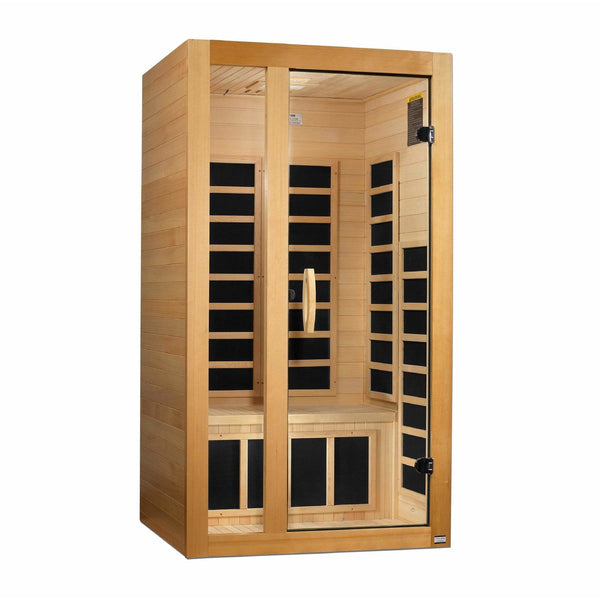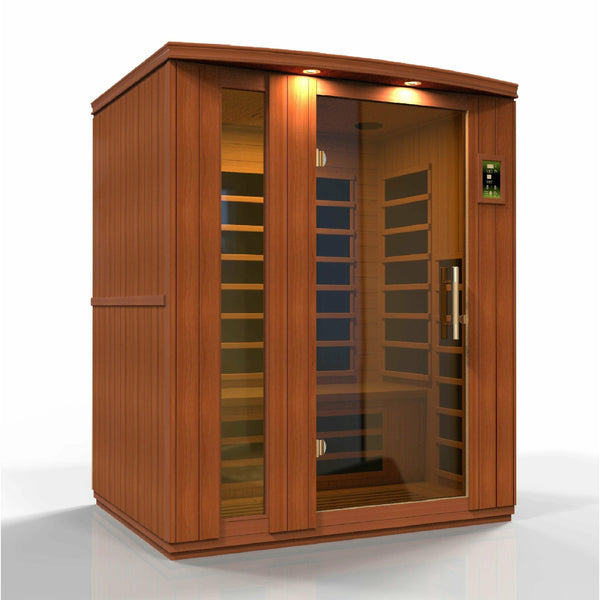Getting from point A to B seems like a simple task for most people. However, many people require assistance with this seemingly easy task due to age, medical conditions, or physical restrictions.
A mobility scooter is a revolutionary invention that enables people with restricted mobility to move around easily. They are powered by batteries and are available in several sizes, configurations, and models.
Mobility scooters are useful to anyone with walking difficulties, such as the elderly or people with disabilities. They give them a sense of autonomy and freedom, allowing them to pursue their daily tasks more easily.
A wide selection of mobility scooters is available, from specialized indoor models to those built for tough terrain. If you're considering buying one for yourself or a loved one, you're likely to have some pressing questions. This guide answers critical questions about mobility scooters, from weight capacity and battery needs to transport regulations and more.
What is the Mileage and Weight Capacity of a Mobility Scooter?

Mileage
Standard mobility scooters can travel nine to 25 miles per hour on a full battery. Heavy-use scooters perform better, with mileage ranging from 25 to 30 miles.
Mileage depends on a host of factors, including:
- Terrain
- Weather conditions
- Weight capacity
Driving your mobility scooter on uneven roads can slow you down by five to 10 miles per hour, but optimal road conditions can allow you to reach maximum speeds of 35 mph, depending on your scooter model.
All-terrain mobility scooters, like this one, typically offer higher speed ranges of 25–35 miles per hour. Because they're designed to handle uneven terrain and have three-wheel drive, they smooth out on the roughest roads without slowing you down.
Weight Capacity
Mobility scooters allow people with restricted mobility to live more active lives, but how much weight can they carry? Most mobility scooters weigh between 35–100 lbs but are built to handle more than 450 lbs.
The weight capacity of a mobility scooter is also determined by:
- Frequency of use
- Purpose of use
The weight capacity of mobility scooters can be better understood through the following categories:
Standard Scooters: Standard mobility scooters are typically considered lightweight. They can support people with an average body weight of 200–250 lbs.
They are best suited for occasional or light use, such as:
- Shopping trips
- Travel
- A day out with family
- Indoor use
Standard mobility scooters weigh less than heavy-use scooters. Many standard scooters, such as this Tzora Classic Folding Scooter, are foldable and compact, allowing easy storage and transportation.
Mid-Range Scooters: On average, mid-range scooters can carry between 250 and 300 lbs. They have a sturdier construction and provide higher mileage but usually require some assembly before use. Due to their increased speeds and capabilities, they're more suited for outdoor use. They can weigh up to 125 lbs after complete assembly.
Heavy-Duty Scooters: Heavy-duty mobility scooters are designed for people who are heavier than average or need extra support. As such, their weight capacity ranges from 300 to 400 lbs. They're built for harsher terrains, featuring broader bases, fatter tires, and more powerful motors. They also have a better battery range and can go longer distances.
Bariatric Mobility Scooters: Bariatric mobility scooters are a heavy-duty, more specialized variant of the standard model. They are designed primarily to withstand the weight of obese individuals, with weight capabilities exceeding 450 pounds.
In addition to their sturdy construction, they offer extra-wide seating to accommodate their users. Bariatric mobility scooters function well outdoors and can be used easily on uneven surfaces due to their reinforced components.
Purchasing a mobility scooter appropriate for your weight is crucial to avoid instability and injury.
What is the Battery Type We Can Use for a Scooter?

Most mobility scooters, whether lightweight or heavy-duty, use a cyclic 12v battery as standard. They come equipped with two of them, offering 24v power output. The advantage of this type of battery is that its consistent power output allows you to ride your scooter for extended periods without compromising performance.
When it comes to the specific type of batteries used, a motorized scooter for the elderly is equipped with one of these:
- Absorbent Glass Mat or AGM batteries
- Gel batteries
- Lithium batteries
- Lead crystal batteries
Lithium batteries are often used in road-class or Class 3 mobility scooters, which have a higher power output and allow faster speeds. Most new mobility scooters use AGM or gel batteries.
Let's look at each of these types in more detail:
AGM Batteries
Due to their sealed design, AGM batteries require little to no maintenance. They also provide a higher power output and are more affordable. They feature an Absorbent Glass Mat, a mesh device jammed between battery plates. Thanks to their higher discharge rate than standard gel batteries, they are safe and dependable.
Gel Batteries
A gel liquid electrolyte is a common element in gel batteries. Gel batteries have a slower discharge than AGM batteries, which translates to slower speeds. However, they offer a better battery range, allowing you to use your mobility scooters for extended periods. They are highly durable and work well with both off-road and all-terrain mobility scooters.
Lithium Batteries
Lithium batteries are the perfect fit for frequent-use scooters that go long distances. They're significantly lighter (up to seven times!) than standard batteries and can run longer on a single charge. They also require little to no maintenance, making them ideal for seniors who need heavy-use scooters. Unlike gel batteries, they don't contain liquid electrolytes, making them leak-free and safer. However, they are more expensive than other batteries.
Lead Crystal Batteries
Lead crystal batteries are an upcoming trend in mobility scooter production. They contain SiO2 lead acid, which ensures better longevity than any other battery type. Lead crystal batteries are also believed to provide a good range, making them ideal for those who travel long distances on their scooters. Their endurance and lifespan ensure that you won't have to change your batteries as regularly.
Is a Mobility Scooter Allowed on an Aircraft?

Most airlines allow mobility scooters aboard their planes at no additional cost. That said, this allowance is subject to specific conditions. For example, some airlines only allow compact, lightweight, and folding mobility scooters on the plane. Lightweight scooters disassemble easily and take up less storage space. They are easier to transport than heavy-duty scooters, making them better suited for air travel.
Other airlines can have specific requirements for the size and weight of the scooter. According to some airline laws, mobility scooters must not exceed 33.8 inches when loaded in an upright position. There are even constraints based on the battery type used in the scooter. For example, a mobility scooter running on lithium batteries can be prohibited if it falls above a certain watt-hour limit.
Before flying with a mobility scooter, we recommend verifying the regulations with your airline. Mobility scooter transportation laws differ by airline, so following specific regulations can help you prepare ahead and reduce travel stress. Doing so will also help you arrange for any additional documentation that may be required upon check-in.
If you want a lightweight, portable mobility scooter, this Moving Life Portable Folding 3-Wheel Scooter is one of the most travel-friendly options available. Its innovative, high-performance design allows you to fold and transport it like a trolley. Alternatively, you can easily disassemble it into two components for hassle-free travel.
Is a Mobility Scooter FAA-Approved?
The Federal Aviation Administration, or FAA, establishes specific requirements for transporting mobility scooters during domestic and international travel in the United States. Mobility scooters are admissible in checked or carry-on luggage, just like other portable equipment, as long as they meet the following conditions.
Airline Approval: The airline you're flying with must authorize mobility scooters with lithium-ion batteries that exceed 100 watt hours (Wh). Noncompliance with this guideline can result in the airline rejecting or moving the device to carry-on luggage. Airlines have the right to request proof or paperwork stating the battery size if it is not clearly marked on the device.
Battery Restrictions: Mobility scooters with lithium-ion batteries over 160 Wh are not allowed in either carry-on or checked luggage.
Accidental Activation: Only mobility scooters protected from accidental activation are permitted on the plane. Unintentional operation during travel can produce friction, posing a fire risk.
Damage Protection: All mobility scooter batteries must be damage-protected. Any scooters with defective or recalled batteries are not permitted on the airplane until they are extracted from the device or proven safe.
Is a Scooter Easy to Fold With One Hand?
Yes, you can fold most scooters with one hand, whether manual or automatic. Many manual folding scooters include mechanisms that allow them to fold up with a simple button press. For example, some scooters have a handy footplate grip that can be lifted to fold. It is a straightforward process for those with adequate upper-body strength.
Scooters with auto-folding options are available for those who lack the strength or dexterity required for manual folding. Automatic folding scooters contain a remote control or button that allows you to fold up your scooter in seconds. The auto controls allow you to store scooters at your convenience without expending any physical effort.
The folding mechanism of each scooter varies depending on the model, so read the instructions carefully before folding it.
Mobility Scooters: Making Everyday Life Safer and Convenient
Mobility scooters are invaluable devices that considerably improve the quality of life for those with mobility issues. By understanding the types of scooters available, their mileage capabilities, weight capacities, and battery types, you can make informed decisions that best meet your or your loved ones' needs.
It's also important to familiarize yourself with transport regulations for your mobility devices to enable a smooth and stress-free journey. Ultimately, the right mobility scooter isn't just a means of transportation. It instills a sense of independence and freedom, allowing you to participate more fully in your daily activities.
Invest in a high-quality mobility scooter that can take you places by purchasing from reliable retailers like Mobility Paradise. We provide a wide range of mobility scooter brands, wheelchairs, and bathroom safety equipment to help you enjoy more active lives. Browse our website for our complete range of offerings, or contact us today to talk to our expert staff.




